The Human-Powered Rule: Europe to Kilimanjaro Without a Motor
A Belgian explorer embarks on the next leg of his goal to climb the world’s Seven Summits by human power alone to inspire an eco-friendly fight against climate change.

On August 19th, explorer Jelle Veyt (you can pronounce it “Yella Vet”) embarked on an expedition from his home in Belgium to the summit of Kilimanjaro, over 10,000 miles due south in Tanzania. In a completely human-powered journey, Jelle will avoid all planes, trains, and automobiles. In fact, he’ll avoid any vehicle with an engine for the next year, as he expects to reach the base of the mountain by July 2020. (Listen to Jelle's podcast episode here).
[buzzsprout episode='1834153' player='true']
"In my whole life, I’ve always been full of passion for everything that I started, and this is exactly the same."
The journey starts with a 3,000-mile cycle from Belgium to the southern coast of Spain, where Jelle will catch his first glimpse of Africa. At that point, he’ll kayak over 17 miles across the Strait of Gibraltar, a busy shipping lane connecting Europe with Africa.
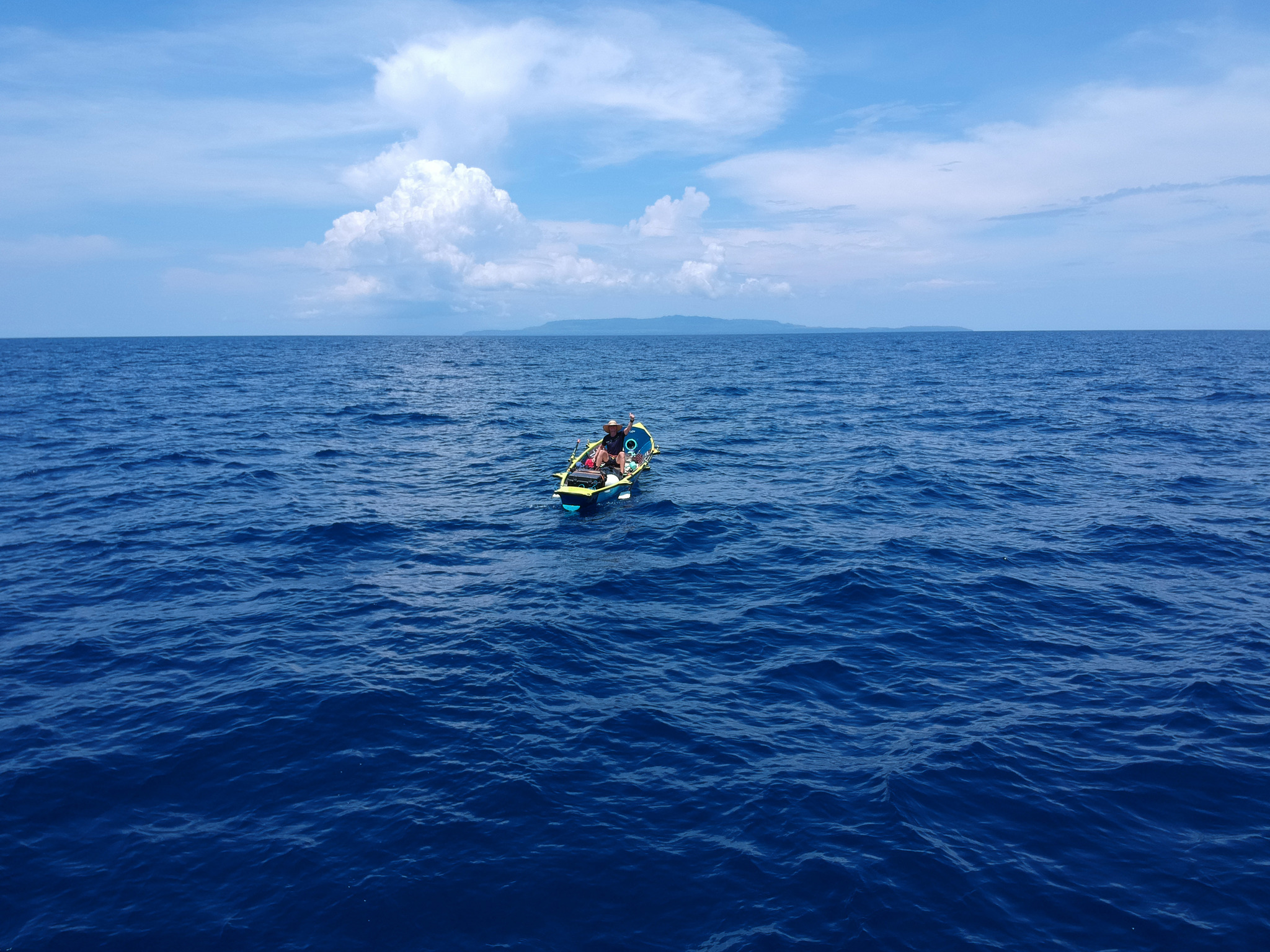
Burning between 5,000 and 12,000 calories each day, and stealth camping at night, Jelle will then cycle and trek through the jungle on a circuitous route to avoid the most dangerous areas of the continent on his way to Kilimanjaro, the tallest mountain in Africa at 19,341 feet above sea level. The volcanic cone’s high elevation, low temperature, and the dangers of altitude sickness make it a difficult trek even for seasoned mountaineers. Although it is considered a "walk-up" mountain, the route to the top requires a five to nine-day commitment and less than half of all attempts reach the summit.
"You have to act like a spy when you're wild camping because you're very vulnerable."
But this expedition to Kilimanjaro is just one leg in Jelle’s ambitious and monumental project he calls “the Seven Summits of Happiness,” to climb the highest peak on every continent using only human power. Kilimanjaro will be his fourth summit, after Elbrus (Europe), Everest (Asia) and Carstensz Pyramid (Oceania). So far he has cycled more than 30,000 km (18,000 miles), rowed 4,000 km (2,500 miles). Jelle is the first person ever to have achieved such a feat.
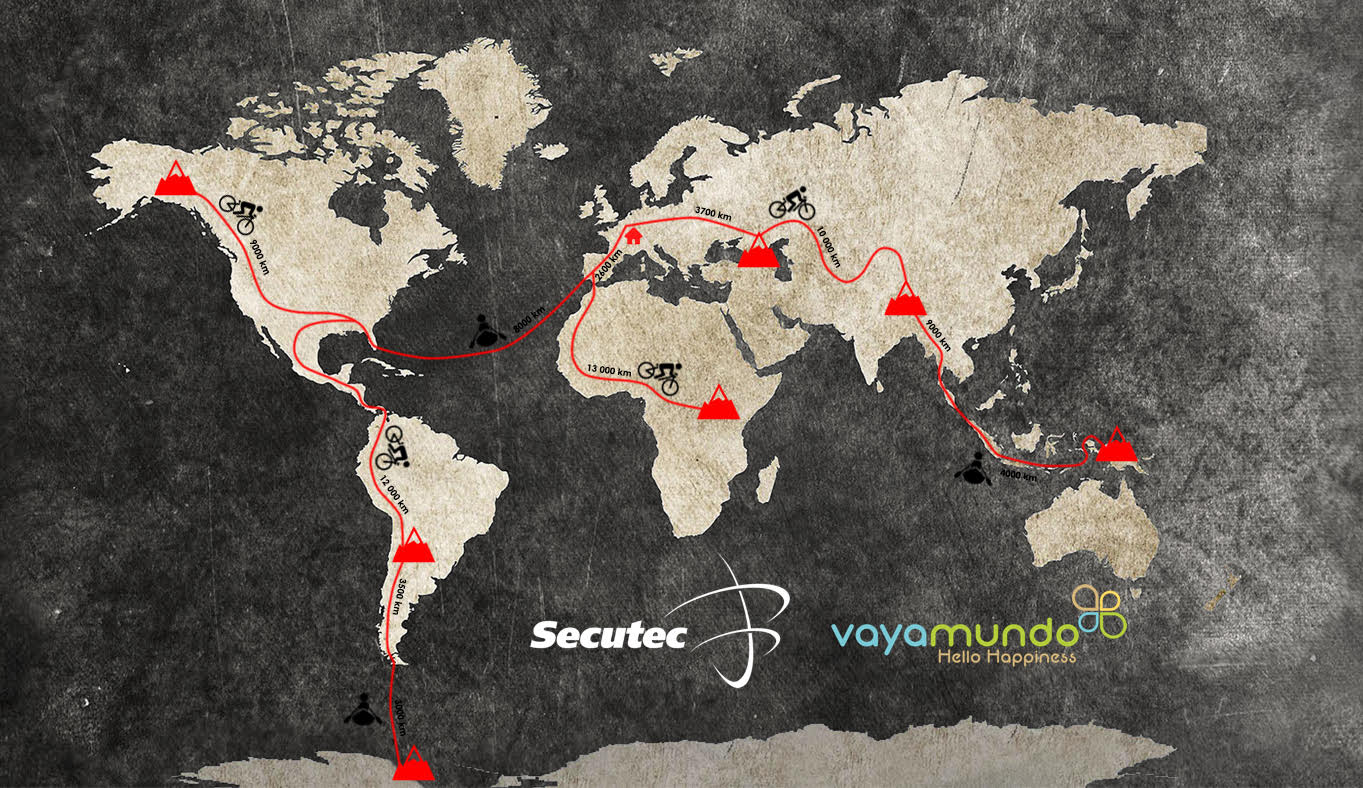
In these previous expeditions, Jelle has had several close encounters with death. On Everest, he got caught in an avalanche caused by the 2015 earthquake in Nepal that killed 19 fellow climbers.
"I turned around and I saw the avalanche coming at me and there I was convinced, I was certain of it, that I was going to die."
https://youtu.be/YiafVrxVm_4
Jelle conceived of this project to benefit street kids in Nepal, drawing from his own experience living on the street in Belgium as a teenager. Along with the help of his sponsors, Secutec and Vayamundo, Jelle will raise money and awareness for Shangrila home, a Belgian run charity that provides food, shelter and education for children in Kathmandu, Nepal.
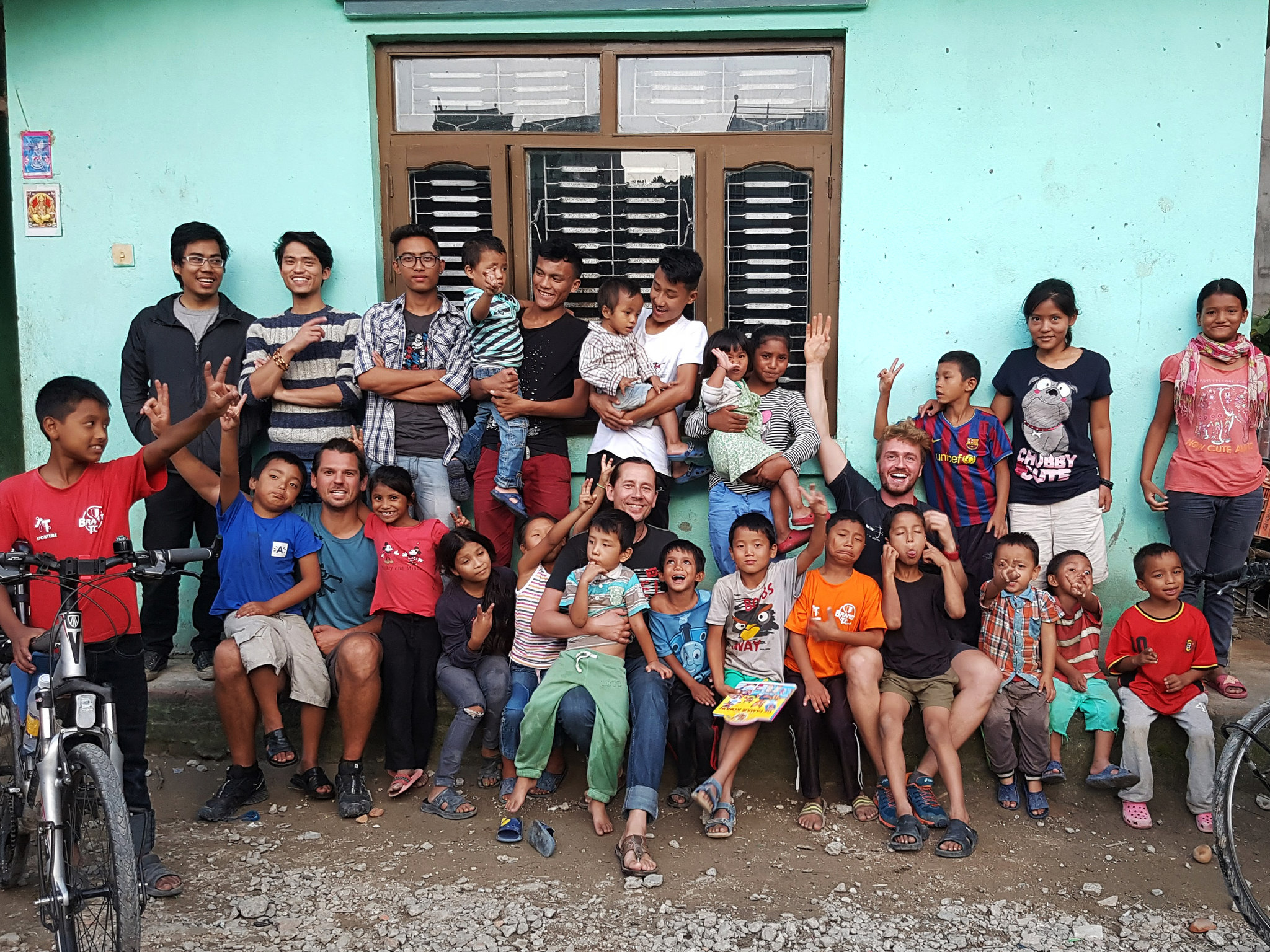
“In certain times when I’m suffering, something I remember that I’ve been through worse both physically and emotionally, which helps me push on.”
Jelle rides to show the negative impacts on industrialization and climate change on such vulnerable, remote communities, but he cares even more about pointing out the positive ways that people are reacting to these problems to help inspire a brighter future.
"We should all try to take a little bit more on responsibility for how we move ourselves."
The Outdoor Journal connected with Jelle just days before embarking on his journey to Kilimanjaro to discuss how to plan a safe expedition route across the Sahara and through the African jungle, his strategy for reaching the top of all Seven Summits with human power alone, and the causes that motivate him through the toughest parts of his journey. To keep track of Jelle’s progress on his journey, visit his blog. And, to listen to the entire conversation, click here.
[buzzsprout episode='1834153' player='true']
TOJ: I noticed that you're starting each leg from your home in Dendermonde, Belgium, but, you could start this leg from the tip of Morocco and only cycle to Kilimajoaro from there. Why did you make the decision to add an extra 3,000 kilometers of cycling plus a 17-mile kayak just to start from Belgium?
Veyt: Because it's my home and where I grew up. It's the way that I've always done it from when I was at university and making all my trips on holidays - I took my bicycle. This feels like the perfect starting point. I make the rules myself when I start the project, and when I started this seven summits project, the rule was to go human-powered from where I live.
NO SUNDAY PADDLE
TOJ: I've ferried across the Strait of Gibraltar crossing from Spain to Morocco several times, which you are planning to kayak across. I’ve got to say, it's no Sunday paddle. It seems very extreme. What are your expectations for that leg of your journey and what are the dangers?
Veyt: My expectations are that it's going to be hard, but not too extreme because it's just a one day trip and it's not the biggest distance that I’ve done at about 17 miles. The other dangers are mainly the currents and there are waves coming from the Atlantic Ocean. It can be quite rough water. Another one is the big vessels passing by. That's going to be the first time I'm navigating through such busy traffic because rowing to Papua was quite remote. I think the biggest challenge there will be navigating through the traffic lanes. I always carry a radio. I have flares as well as a horn. I have a satellite tracker and I think I will be able to communicate with people on land who can track the big vessels so they know where they are and where I am, so they can warn me when something would get too close.
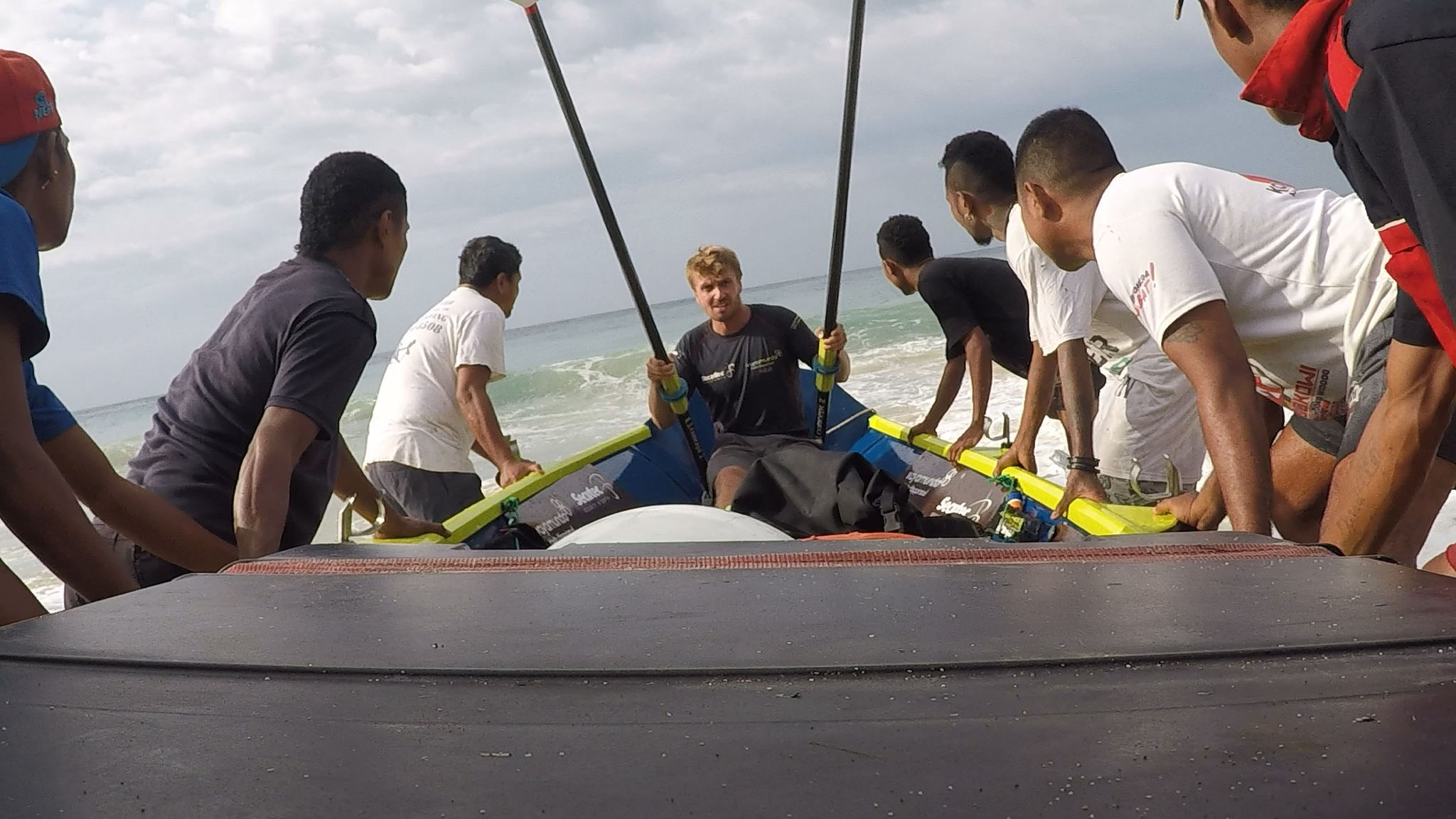
CROSSING BORDERS
TOJ: What is your process for finding passable roads and border crossings in Africa that will actually let you cross human-powered when you're so far away?
Veyt: That's a difficult thing. I had a lot of things to learn on my first trip to Nepal where I made some mistakes about not having a lot of preparation to cross borders and then I had to be very creative with certain things. I search a lot on the Internet and besides that, I buy a lot of roadmaps. I know people who have cycled there or taken a jeep to Africa, so from those stories, I have an idea of where I can go human-powered to cross a river or a border. I think during my trip I will still have to make a lot of detours anyways when I get to some areas and find out they are not passable. I will have to go back and take another road. But that's the rule I made for myself and I'm not really thinking to change it.
TOJ: What's something creative that you had to do in the instance where you needed to improvise to get across a border? You said that you've had to do some creative things to get across on the way to Nepal. What were some of those tricks that you had to come up with when you needed to improvise?
“My Russian visa took too long to arrive because I was too honest on the application.”
Veyt: I left Belgium without my passport. I just had an ID card because in the whole of Western Europe you can travel freely with your ID card. My Russian visa took too long to arrive - over two months - because I was too honest on the application. On the way to Mount Elbrus on my human-powered route, I planned to go to areas that were off-limits. I left Belgium anyway because I knew the weather would change in the mountains and I had to be there in the right season to make the summit. Just before the border with Ukraine, where I needed my passport, it was a big guess to see whether it was finished, and luckily it was. A friend of mine sent my passport to a hotel there so I could pick it up in Ukraine and I could continue with it. I also had to make a big detour between Kazakhstan and Kyrgyzstan to be able to go human-powered into China because there were some places where they wouldn't allow you to get there by bicycle.
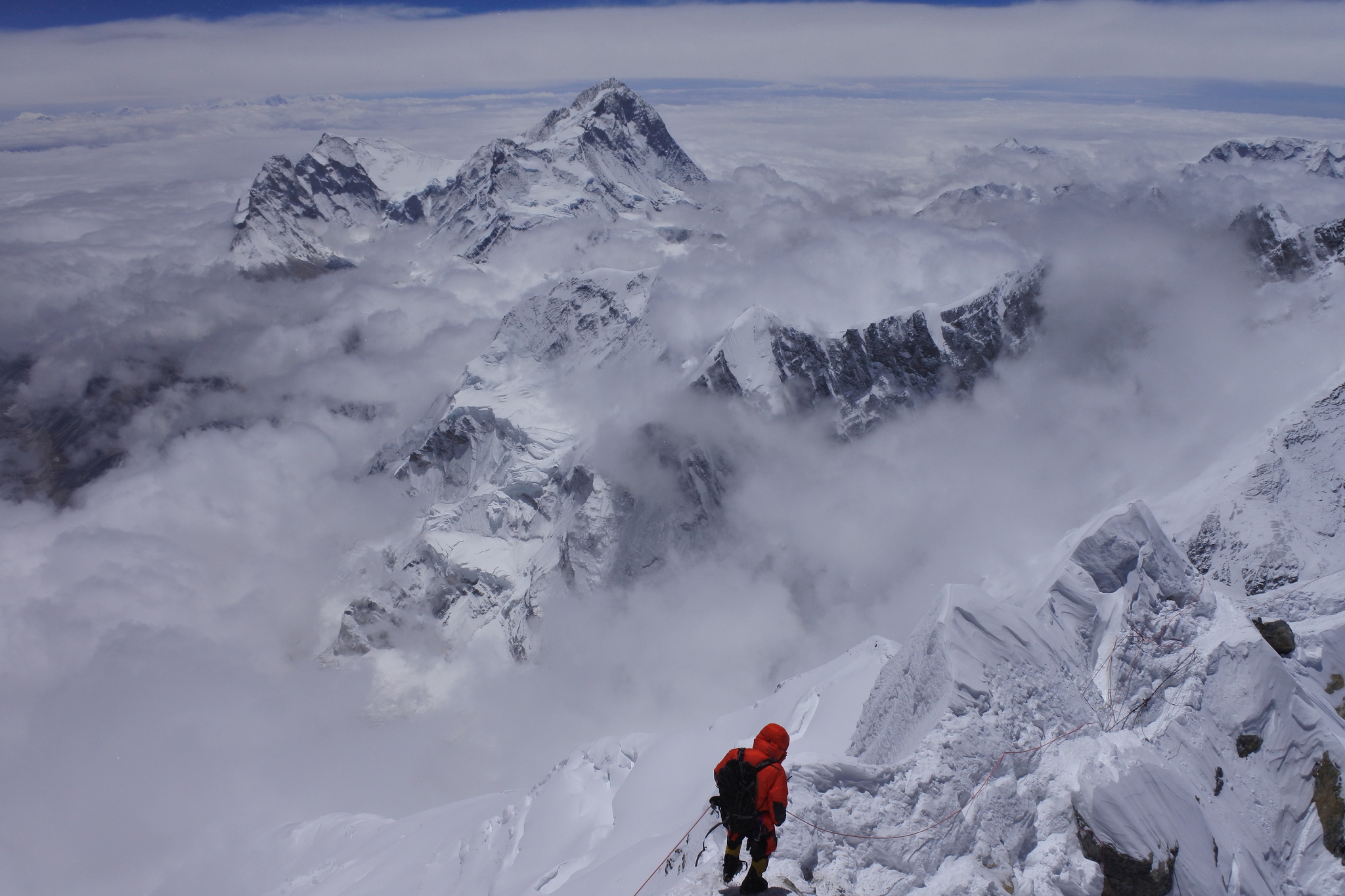
TOJ: When something happens like that where you actually are forced to get inside a vehicle with an engine, are you able to make exceptions to your overall concept of doing the entire journey human-powered?
Veyt: When I cycled to Papua, which was extremely hard, there was a certain point when 30 military soldiers were killed by rebels. It's something that doesn't hit the news internationally. There’s not a lot of press allowed in Papua. So I couldn't trek through the jungle because the entire area was on lockdown, but the rest of my expedition was already arranged, so I had to cross the last 50 or 60 kilometer stretch of the jungle by helicopter. I had to make aN exception because I was there and everything was prepared, but I made a promise to myself once the region calms down that I will trek through that part of the jungle. I will go back to finish it. So I will make exceptions but they will stay temporary.
SEVEN SUMMITS STRATEGY
TOJ: Kilimanjaro will be your fourth summit out of your bigger concept of reaching “Seven Summits of Happiness,” what is the strategy you chose for selecting the order of the summits?
Veyt: The first part was easy because I got an invitation to work in Nepal as a physiotherapist and my friend who works there as a physio also has expedition company in Nepal, so that gave me access to all the mountains to the East. Kilimanjaro makes sense to go to next because it’s the only mountain that’s straight to the south of Belgium, my home. After this, it’s all to the west, so I will have to row across the Atlantic Ocean, which is a big gap in logistics and effort and everything. From there, I still have three mountains to do once I cross the Atlantic. It makes the most sense to me to go first east, then south, then west. It gives a more clear order.
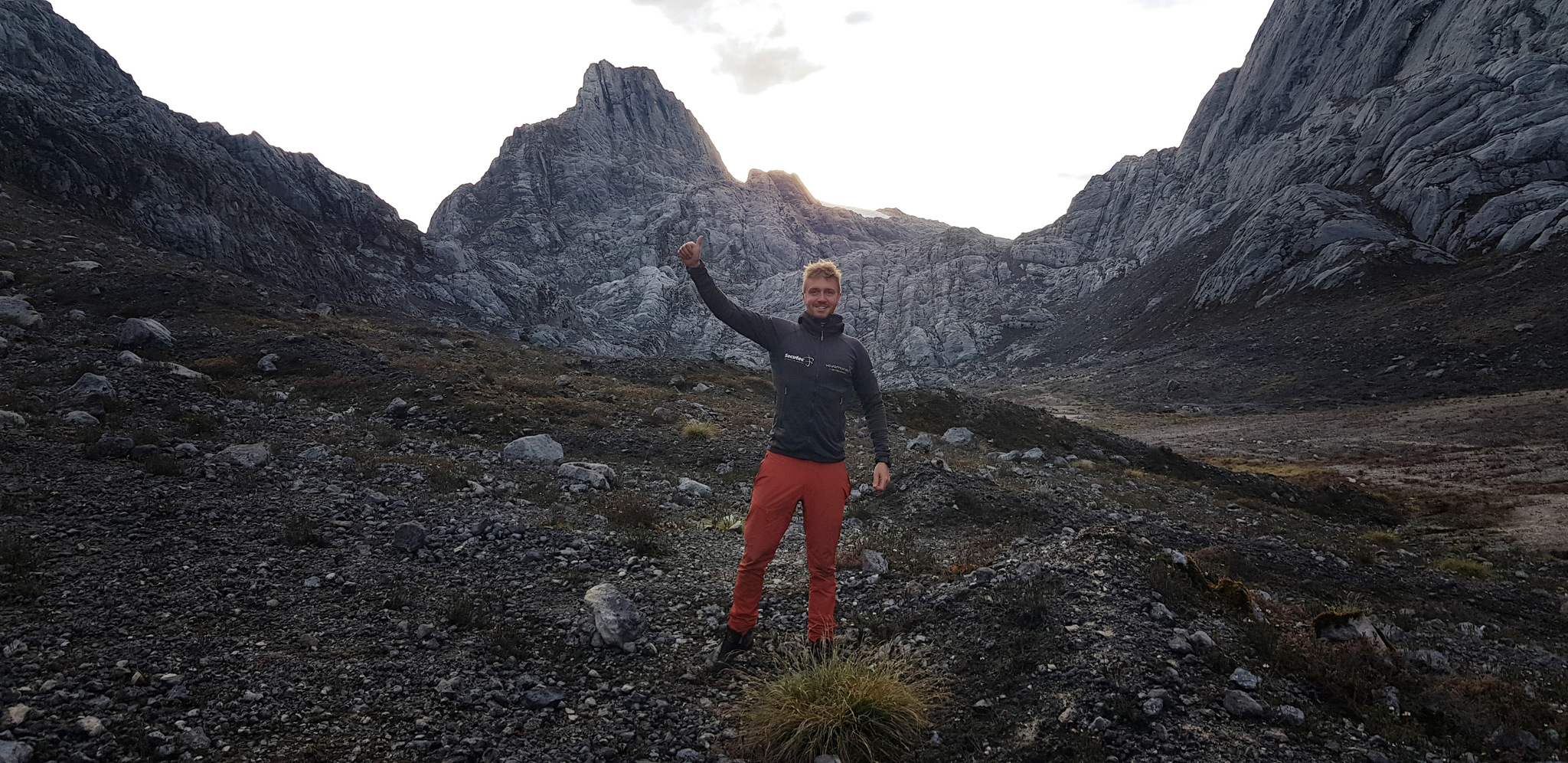
PHYSICAL LIMITS
TOJ: Has your career as a physiotherapist helped you with understanding the limits of your own body and how far you can push it as well as the recovery aspect so you are able to perform day after day?
Veyt: Definitely. I didn't work a long time before I left to Nepal, but, even my studies at university have been a strong asset for what I'm doing now because I feel when something's wrong. For example, I have an injury and I know it's not going to get to a certain point that it will cause permanent damage so I can continue despite the pain. That really helps because if you don't know what it is, you will maybe get worried too much and you will quit. I do injury preventive exercises every other day to prevent certain injuries.
TOJ: So we've been going through a bit of a heatwave in Europe this summer, but have you done anything extra to prepare for the heat that you're going to face when you are crossing the Sahara?
“I know I'm capable of performing in the heat.”
Veyt: During the heatwave here, I still cycle to work about 30 miles each way, as I'm still a part-time physio when I'm in Belgium, so it's been a good preparation for me to be cycling in the heat. But besides that, I know I'm capable of performing in the heat. It was the same in Indonesia when I was rowing there. Lots of times it went to around 50 degrees Celcius (122° F) in the boat, which was extremely hard. But still, the Sahara is going to be a big challenge.
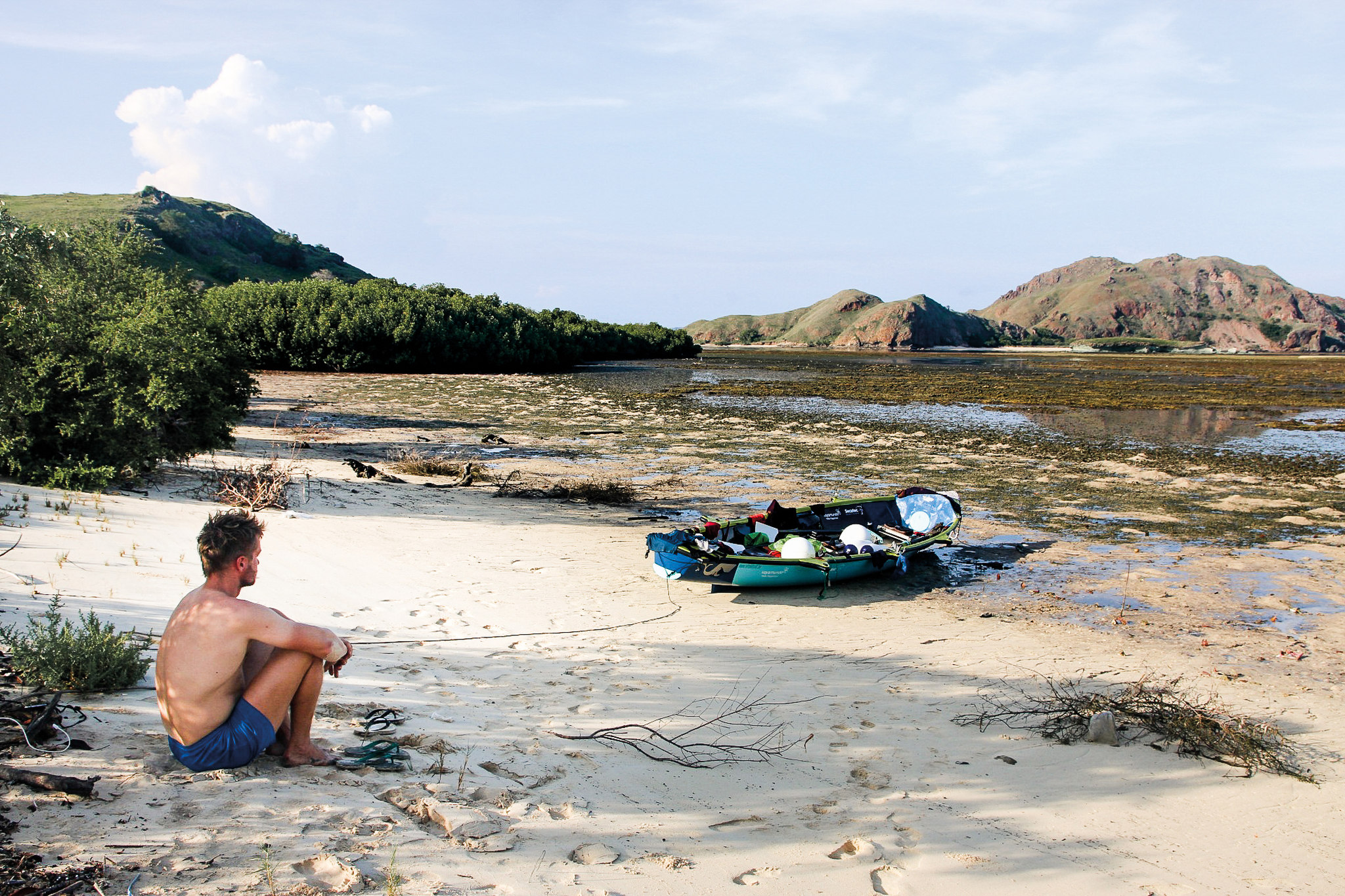
STEALTH CAMPING
TOJ: Can you describe what your accommodations are going to be like at nighttime and what is your camping setup?
Veyt: When I’m cycling, I’m mainly stealth camping. You have to act like a spy when you're wild camping because you're very vulnerable, You're alone most of the time on the roads. Most people are extremely nice and I haven’t had a lot of bad encounters with people, but you don’t want to be in plain sight at night when cars are passing by you. So mostly I camp inside some bushes, my tent is green just to keep a low profile, and when I really don't feel comfortable at nighttime, I don't turn on lights or anything so people don't find me. Another thing, it’s always good to have extra precautions around animals, especially in the jungle. When I'm camping in a village, it's safer because there are more people who are actually really helpful and really nice. And sometimes when I'm in a big city, I will have to find a hotel because I will have to apply for visas in some capital cities.
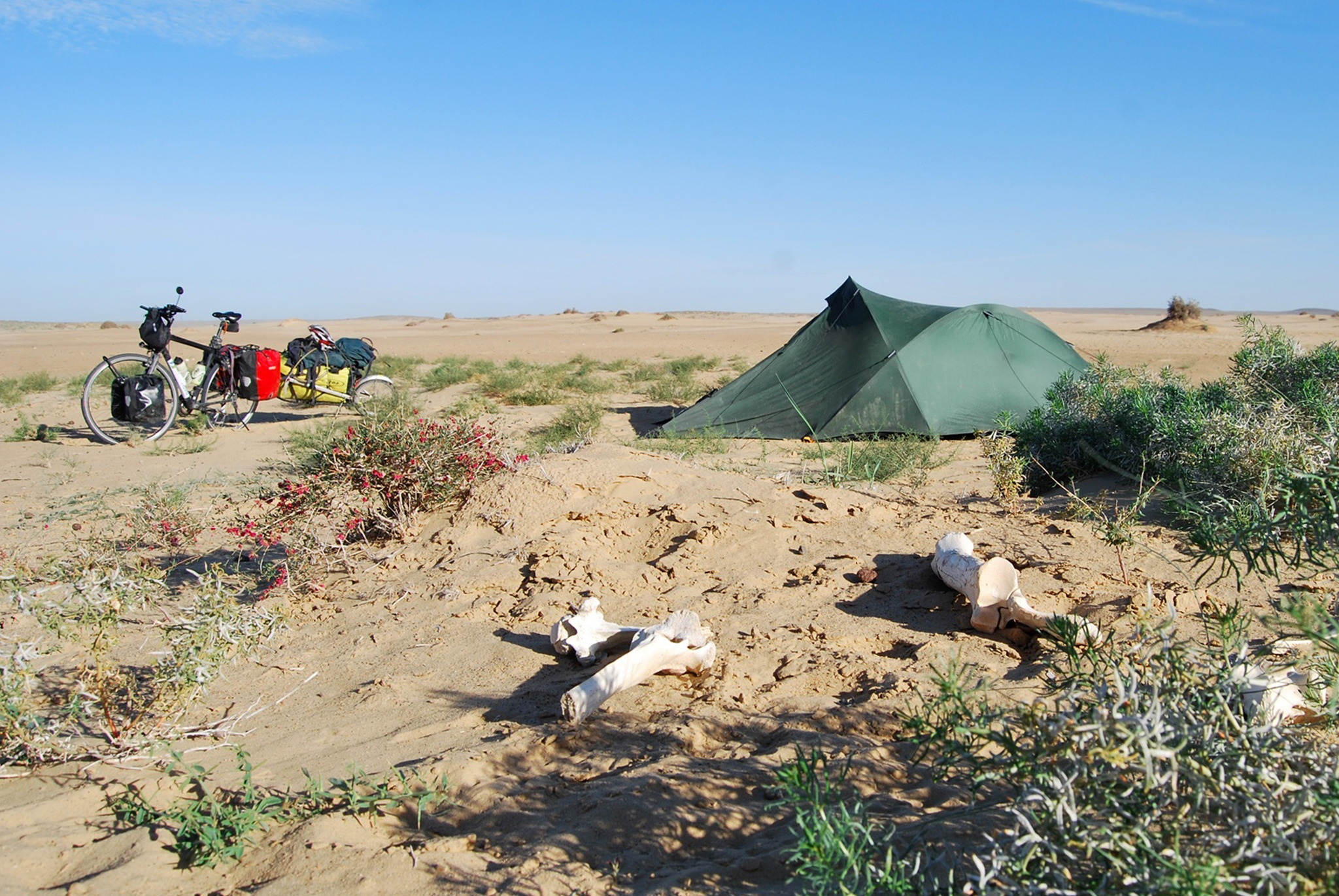
TOJ: Do you have any sort of machete or other self-defense?
Veyt: When I was cycling to Nepal, I had my ice axe with me for climbing (laughs). There were several times when I felt very threatened and certain times I slept with the ice axe next to my head. In Papua, there was always a machete as well because everybody had a machete there, which is a very normal thing to carry. I’ll probably carry a machete in Africa, not to defend myself against people, but mainly for everyday use, as I did in Indonesia to open a coconut or to chop through the jungle.
TOJ: I know you'll be burning a lot of calories cycling for hours every day and you'll need to replenish them. How are you going to manage your food supply?
Veyt: I will be burning between 5,000 and 12,000 calories a day, so it's very difficult to eat that much during the day, especially in the more remote areas. I am going to take some freeze-dried food packages that just need hot water as well as a lot of energy bars. I mostly rely on eating in villages because, until now, most people are extremely friendly about taking you in for dinner, even for free. It doesn't always cover my calorie needs but at least there’s some food.
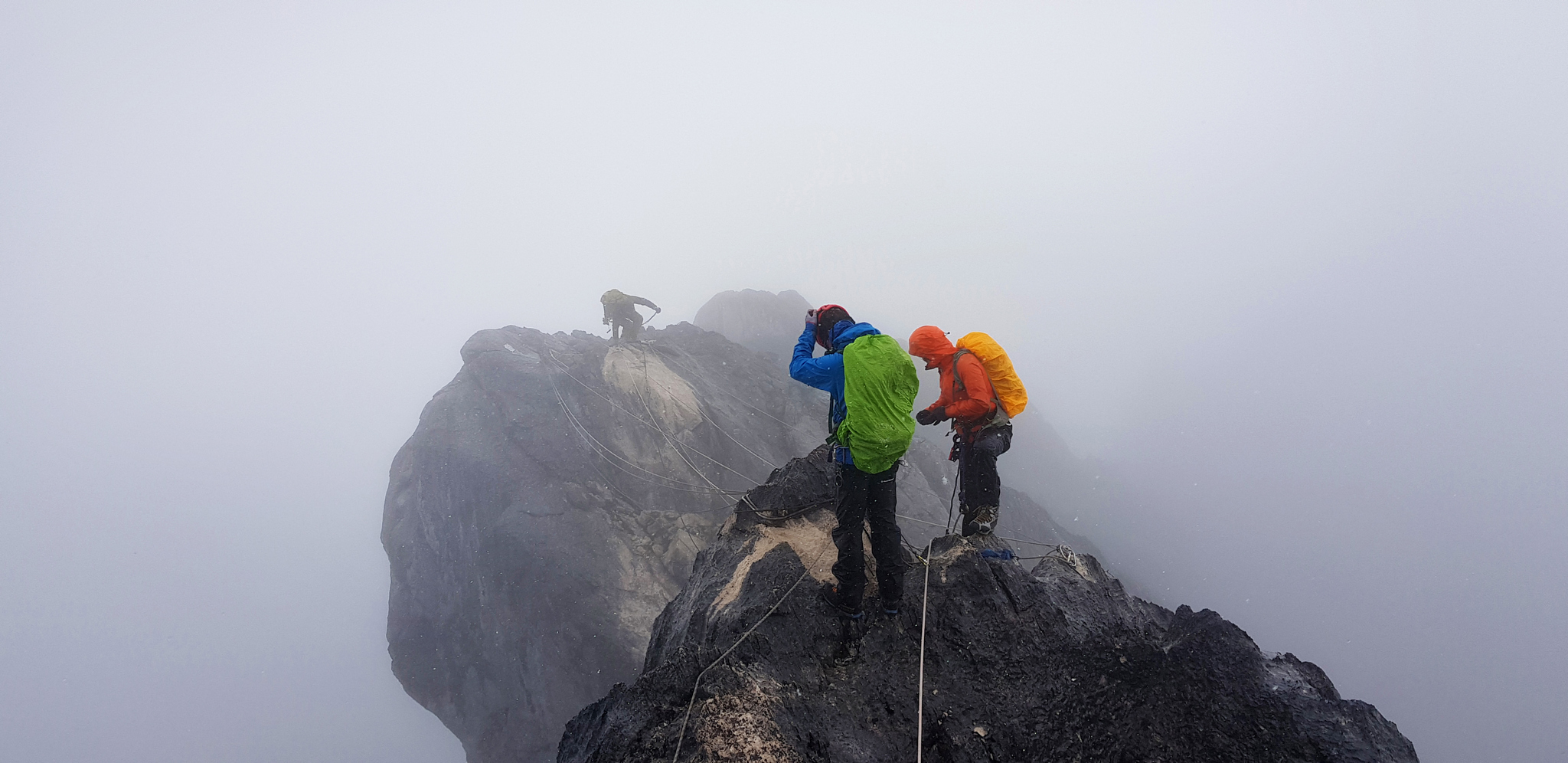
RIDING FOR A CAUSE
TOJ: I know that you're not just riding for yourself. You have causes that motivate you. And one of them is the Shangrila home which houses street kids in Nepal. Can you talk a little bit about the causes that you ride for and whether or not you get to see firsthand the impact that you're making through your projects?
“This charity is personal for me because I lived on the street myself for a couple of years.”
Veyt: The Shangrila home is a home for street children in Nepal. They take care of about 200 children, with almost one hundred living there permanently. They get food, shelter, and an education. It's an amazing project that a group of Belgian people started 25 years ago and it works really well. For example, there's one girl, she was the first one who grew up in the home, she went to college, she got a degree, and she now is employed in the home as a social worker. Every time I go to Nepal, I see how they work there and it's a really great environment. This charity is personal for me because I lived on the street myself for a couple of years and because I was born in Belgium, I could get help from the government. I'm thankful for that and I want to give opportunities like that to other people in life as well. That's one of the reasons why I'm really attached emotionally to the home as well.
TOJ: During some of the low points of your journey, do you ever draw on memories or emotions that you struggled with when you were in that period of your life as a teenager living on the street?
Veyt: In certain times when I’m feeling extremely low during my expeditions, when I'm suffering, something that keeps me going is remembering that I’ve been through worse both physically and emotionally, which helps me push on.
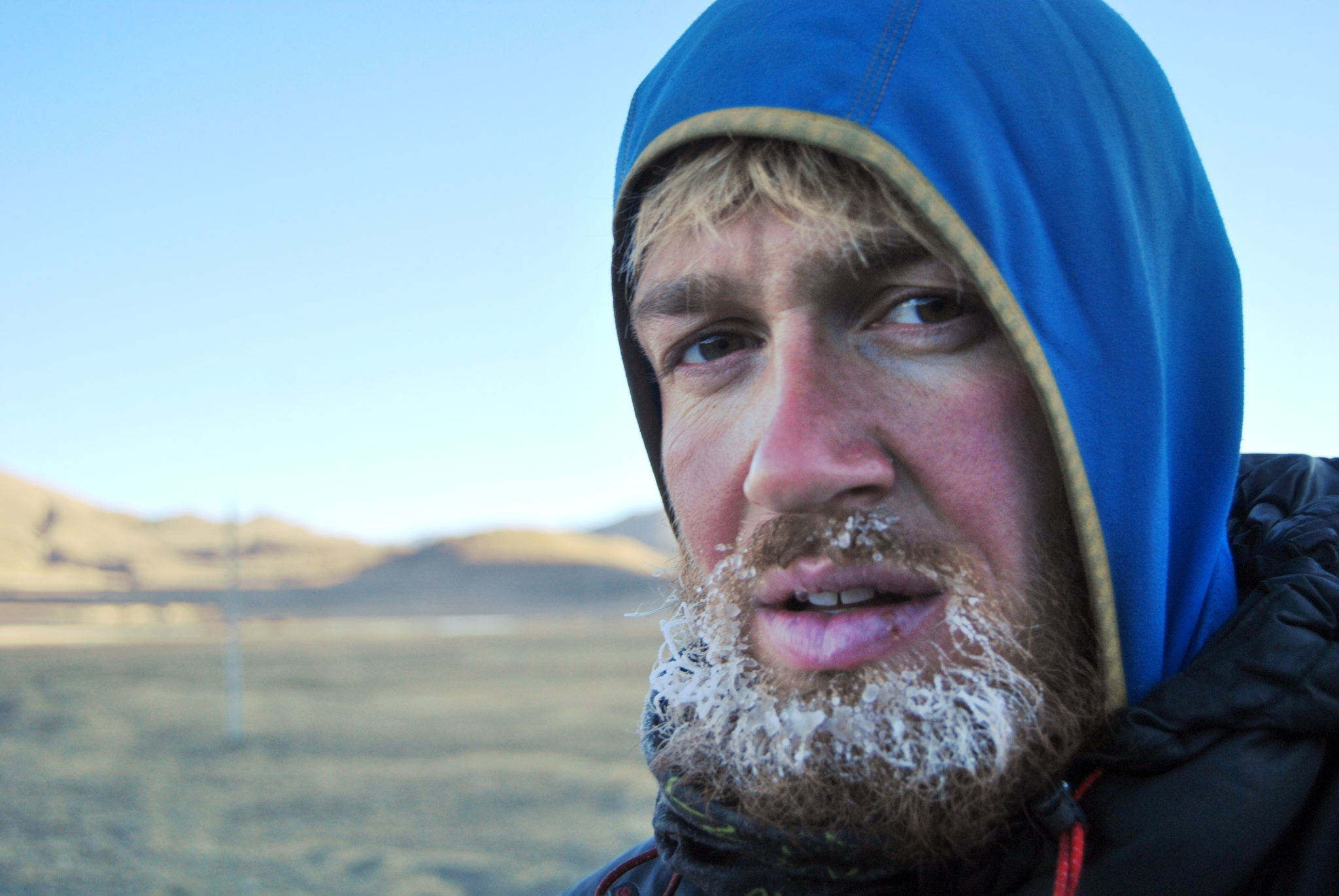
TOJ: Is one of the goals of your expeditions to shed light on some of the negative impacts that human civilization has had on some of the more remote communities around the planet?
“I think it's more important to show the positive things instead of only showing the negative things that we are doing.”
Veyt: I want to show the world that we have a big impact on these remote spaces and these places are the first to suffer. My goal now in Africa as well is to show how climate change is impacting a lot of lives there. But I don't want to show only the negative things that are happening. I want to show positive things people are doing as well. In each country, I am going to visit several organizations that are fighting climate change in a positive way, for example planting trees. I think it's more important to show the positive things instead of only showing the negative things that we are doing.
TOJ: For people who find your journey inspiring, what would you encourage them to do to feel like they can get involved?
Veyt: People can always contact me to discuss ways they can help. I also encourage people to get in contact with smaller organizations around them that are very engaged. With smaller organizations, you can get a clearer overview of how things are going there. In addition to financial support, now we are trying to find ways to help them become self-supportive.
THE HUMAN-POWERED RULE
TOJ: One of the central elements of your journey is that it's human-powered. Why is it so important for you to do this human power challenge and what are you trying to show about the capabilities of the human body?
“We should all try to take a little bit more on responsibility for how we move ourselves.”
Veyt: As a physiotherapist myself, I am very interested in the human body, especially in finding the limits of it. And it's not only the physical aspect of an expedition, because the biggest challenge that I have had so far is always the mental aspect of overcoming challenges and pushing through. I also want to inspire people to travel in a different way. We don’t always need to drive a car or fly everywhere. I tried to change the world a lot even when I was younger. And, I think we should all try to take a little bit more on responsibility for how we move ourselves.
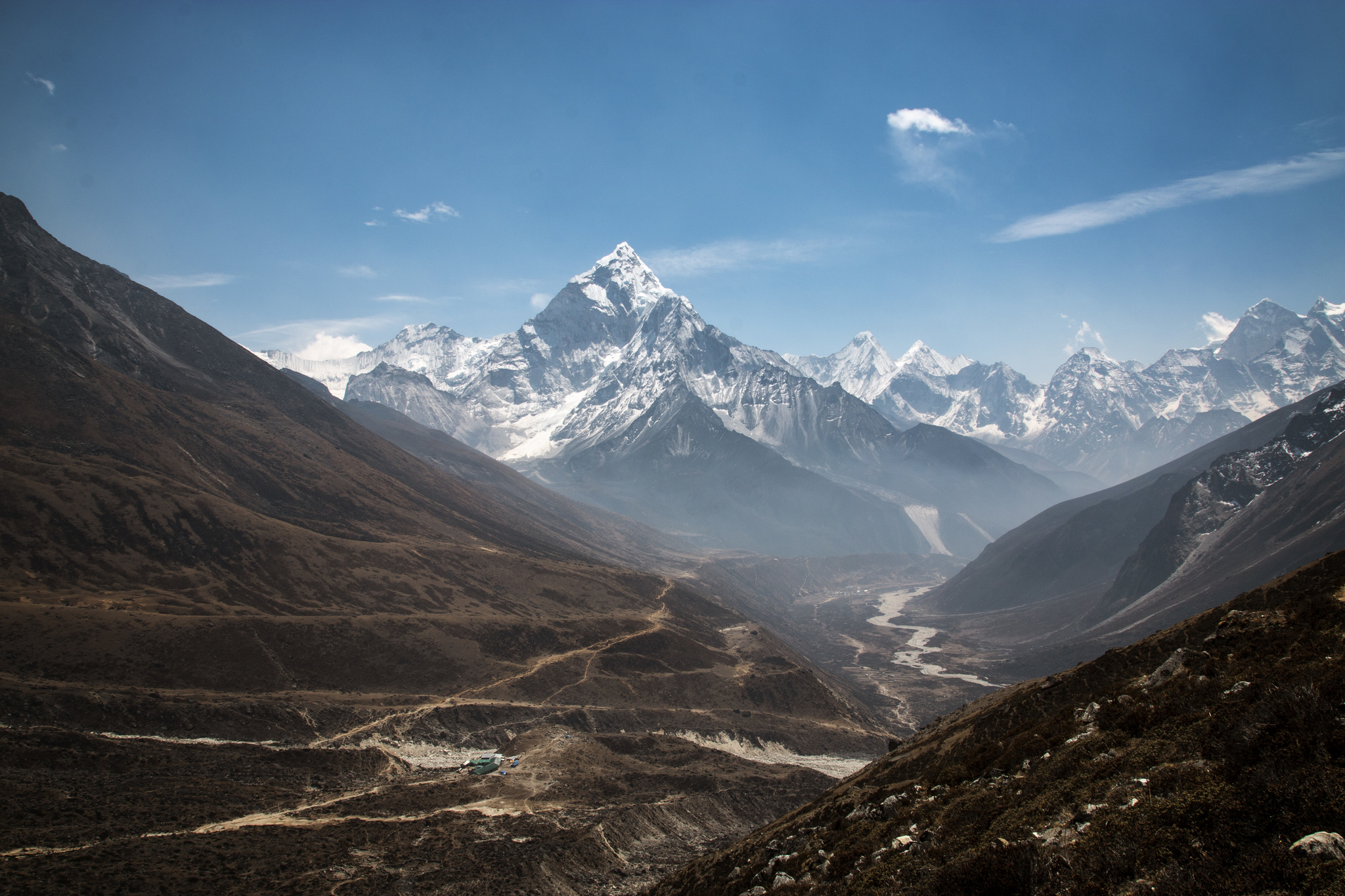
TOJ: I read that in order to go on this journey, you don't have a car and you don't have a house which are material things that a lot of modern-day culture teaches us to strive for. You've titled this expedition the “Seven Summits of Happiness,” and I wanted to ask you, what does “happiness” mean to you?
“I turned around and I saw the avalanche coming at me and there I was convinced, I was certain of it, that I was going to die.”
Veyt: I see a lot of people strive for always more and more and more and they compare themselves to others materially. For me, if I feel good, I’m happy. When I’m cycling around Indonesia when I have food and I have water and a place to sleep at nighttime, I’m happy. One of the things that keeps me going in difficult situations is that I really appreciate the small things in life. For example, when I lived on the streets, I couldn’t always take a shower, so I learned to appreciate it when I could. I don’t take a lot of things for granted. One really difficult situation happened when I was cycling through Kazakstan. It was nothing but straight road for 2,000 kilometers. A car stopped and they invited me into their garden for biscuits. The biscuits weren’t even that good to be honest, but I really appreciated the gesture and it made me happy.
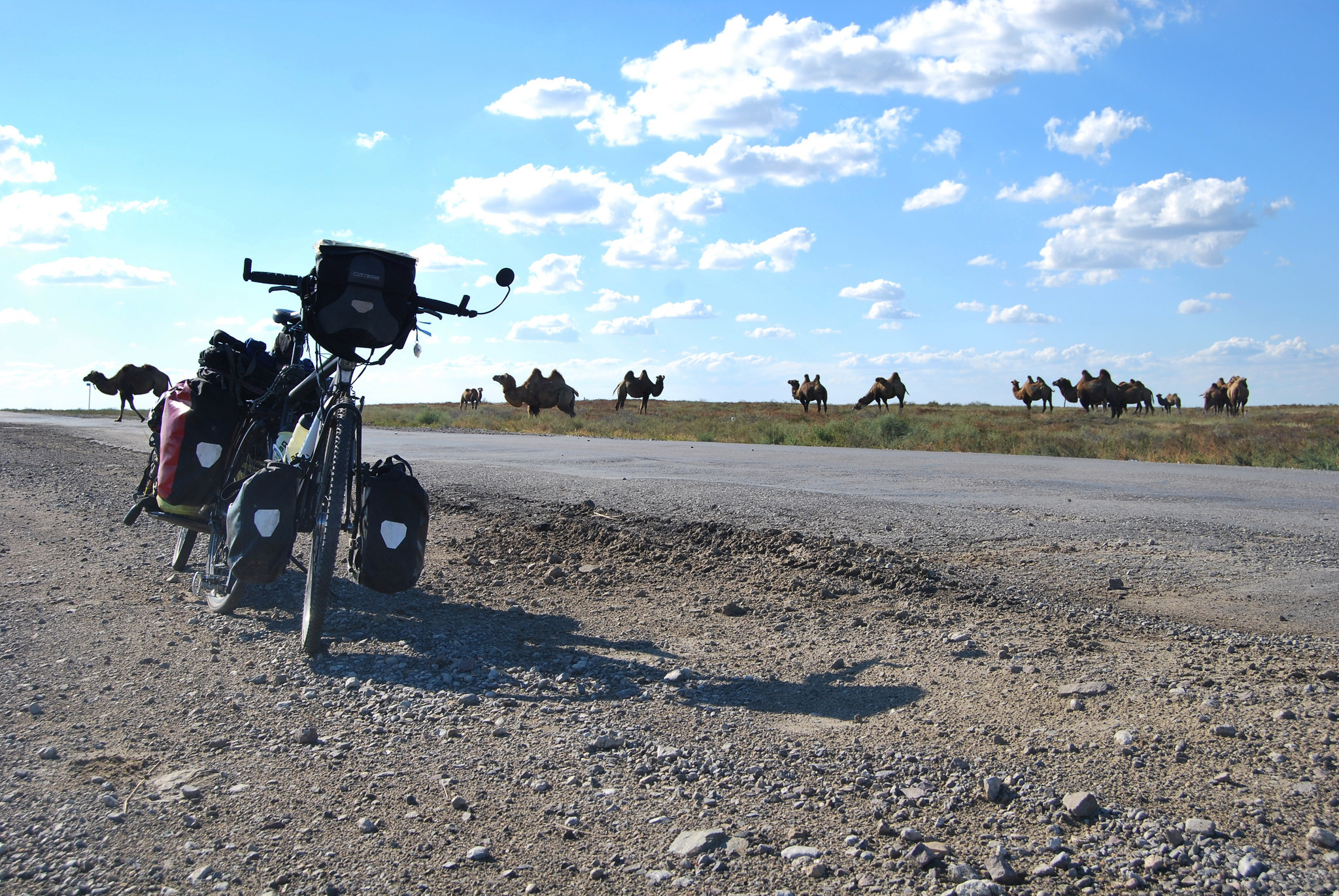
TOJ: I know that you've had a couple of close calls, especially when you got caught in an avalanche on Everest in 2015 and then you also came down with the tropical virus in 2018 on your row from Java to Papua New Guinea. And I know that you've also had to do things like the tyrolean traverse at the top of Carstensz. What would you say is your number one sketchy moment?
Veyt: Well, definitely the avalanche in Nepal. There’s been several close encounters to my death. In this one. I turned around and I saw the avalanche coming at me and there I was convinced, I was certain of it, that I was going to die. That feeling was quite traumatizing even afterward and it took a couple of months to get over the whole thing.
TOJ: Did going through that experience change your relationship with dying?
Veyt: Before I left to Nepal, some friends asked me what happens if I die, but I'm not afraid to die. I'm perfectly ready because I feel good, I love my life and I know it's part of life. The thing is that I don't want to die, not at all. I just love life so much. But, when I was 17 years old, my best friend got killed in a hit and run accident. In six months' time, I had five friends who died and that taught me a big lesson in life. I have a different perspective on life, which for some people looks harsh, but for me, it's quite realistic that I know I'm going to die one day and I better die happy.
To follow along with Jelle’s progress on his journey, visit his blog.
Website: www.jelleveyt.be
Instagram: @jelleveyt
Facebook:@jelle.veyt
Subscribe to The Outdoor Journal Podcast for more stories like this.
Listen on Apple PodcastsListen on SpotifyListen on Google Podcasts

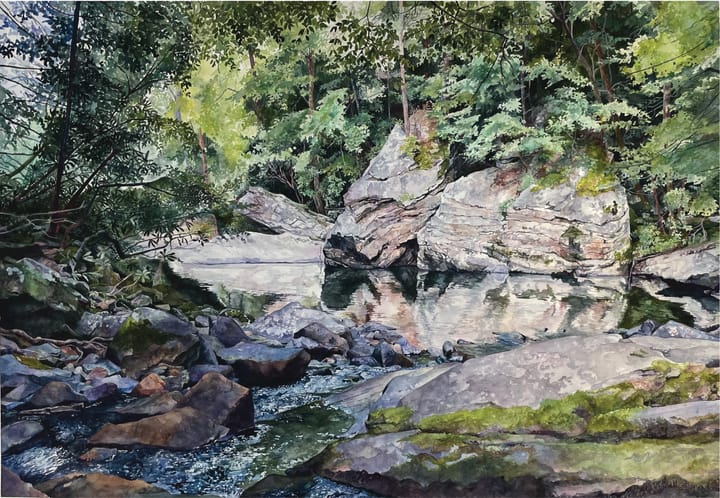
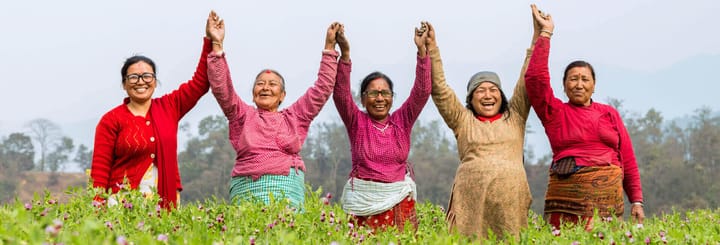

Comments ()